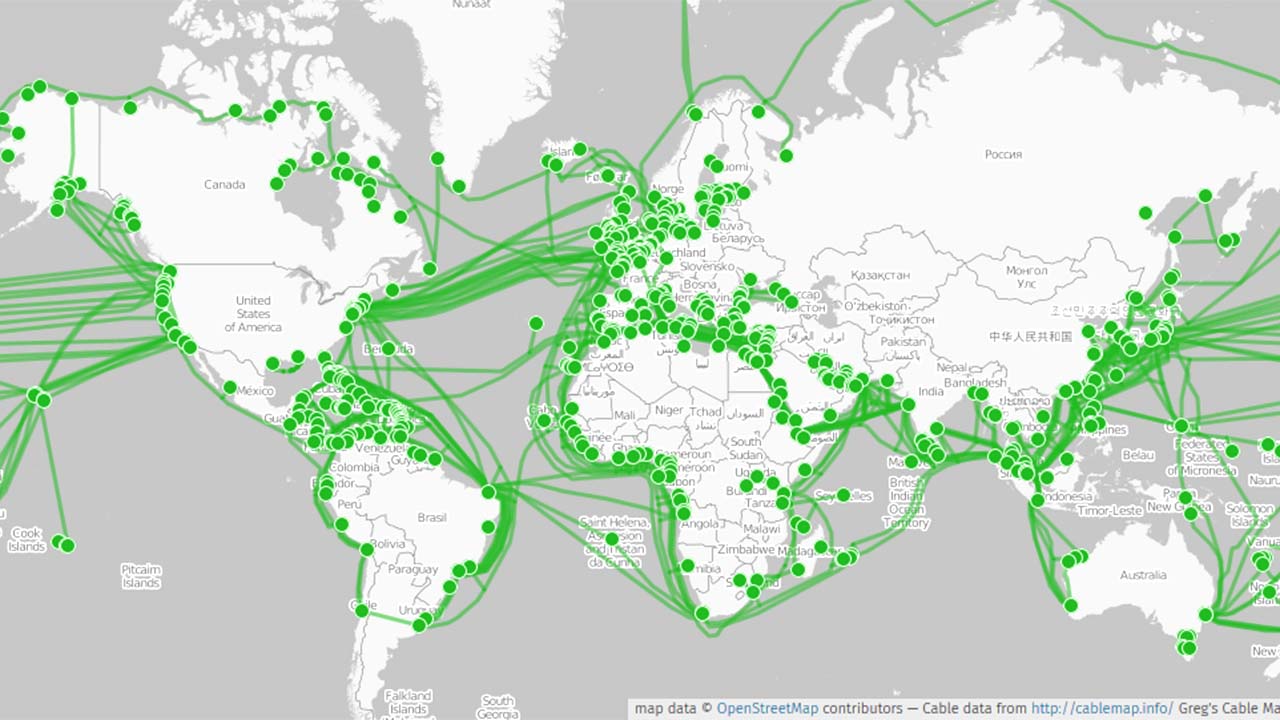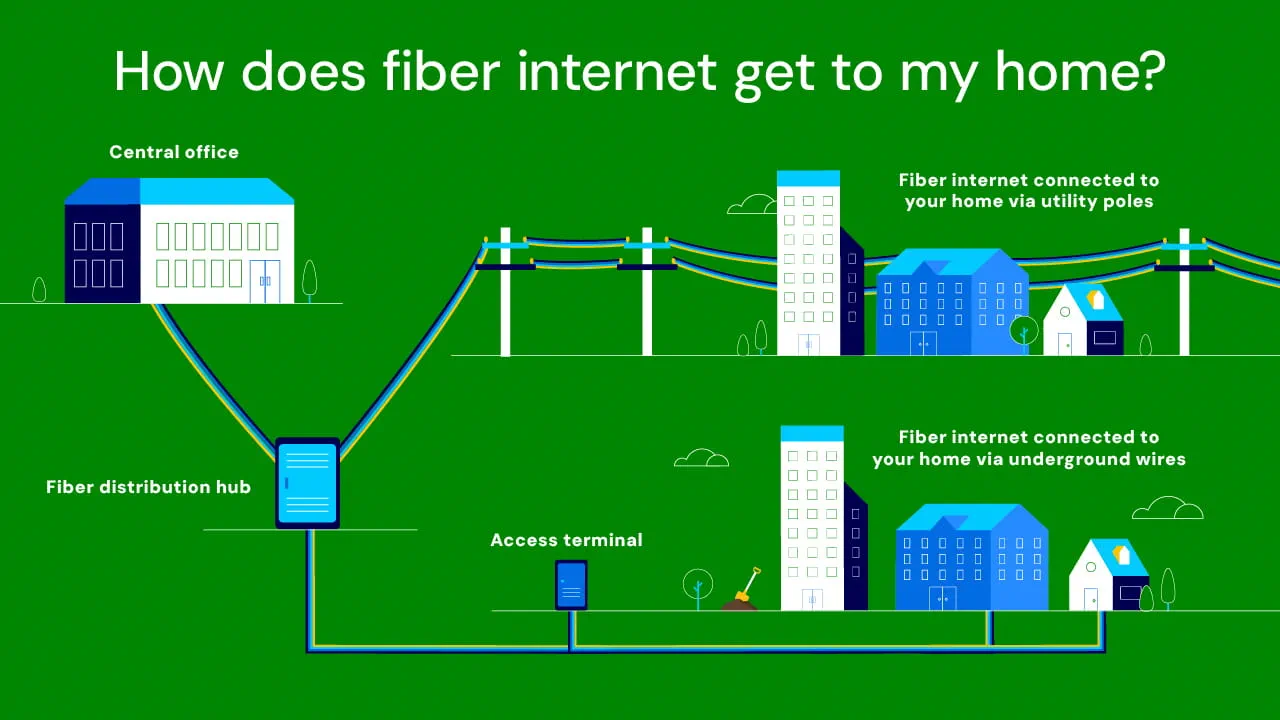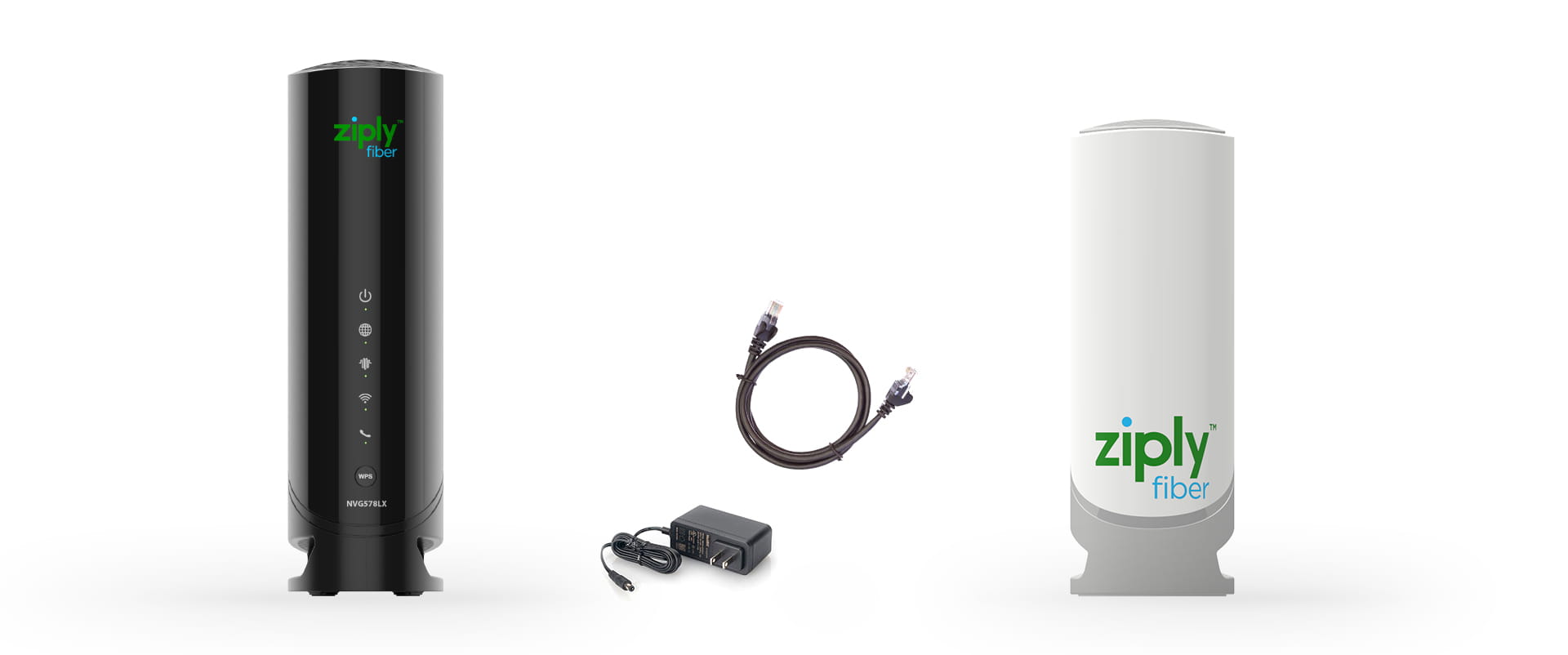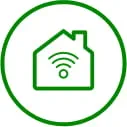Maybe you’ve heard about fiber internet and you’re wondering if you should believe the hype. Maybe you’re also wondering, what is fiber internet, anyway? Don’t be embarrassed — we’re here to bring you up to speed. Fast, reliable, fiber internet speed, that is.
What is fiber internet?
Simply stated, fiber internet is a type of internet connection that sends data over fiber-optic cables.
What does that mean, and why does it matter? Fiber is quickly becoming a competitor to cable internet, which is what most of us have been using for years. In the early years of mainstream consumer internet (“you’ve got mail!”), we connected to the internet through our telephone lines, to the annoyance of anyone in the house who needed the phone. In time, our internet connections went from dial-up to cable, which typically got bundled with cable TV and phone packages.
Unlike cable, which uses copper wires to transmit electrical signals, fiber-optic technology uses thin glass strands to transmit data as pulses of light. Crazy, right? Fiber allows for significantly faster speeds and higher bandwidth, meaning you can download, upload and stream content with minimal delays or interruptions. Also, fiber connections are dedicated to the home, not shared with the neighborhood. This means less network congestion and no peak-time slowdowns, like after school and work.
A brief history of fiber internet
Fiber internet may be a relatively new concept to consumers, but the technology of fiber-optics goes back to the mid-19th century when Irish physicist John Tyndall discovered that light could travel through glass.
But Tyndall was before his time, and fiber-optics didn’t become a serious telecommunications technology for another hundred or so years. In the 1950s and ’60s, the discoveries picked up, including by “unsung hero” Narinder Singh Kapany, who coined the term fiber-optic and wrote the first book about it.
Researchers discovered how to improve signal strength and refined the technology until 1973, when the first phone call was made using fiber. One of those discoveries, made by scientists at Corning (the same company that makes ceramic cookware), found out how to reduce attenuation — that is, the depletion of the fiber-optic signal — by making the glass purer. This discovery launched fiber-optics as a viable long-distance telecommunications technology. The patent described fiber as able to carry “65,000 times more information than copper wire.” On the day of the discovery, one of the researchers wrote in his notebook that he could “just about feel the spirit of Edison in the lab.”
The telecommunications industry began employing fiber over the subsequent decades for large-scale networking projects, like wavelength division muliplexing (don’t worry, that won’t be on the quiz). However, the costs were high for household use, and when the dot com bubble burst in 2001, the fiber industry took a hit.
Nowadays, as households worldwide become more reliant on the internet for work, school and entertainment, a fast and reliable connection proves to be crucial. Fiber is poised to be an accessible and affordable option and it’s already edging out competition in the cable space.

(Modified: colors of the map) A map of the world's undersea cables in 2015. / Cable data by Greg Mahlknecht, map by Openstreetmap contributors, Wikimedia Commons // CC BY-SA 2.0
Is fiber-optic internet better than cable or DSL?
Both cable and DSL use copper lines to transmit data. Cable uses coaxial lines, while DSL (short for Digital Subscriber Line) relies on telephone lines. While fiber and copper transmission were discovered around the same time, copper went on to be the leading telecommunications technology — even serving as the first Transatlantic communication in 1858.
Read more: Fiber vs. cable internet: how do I decide?
Of the three connectivity types, DSL is the slowest of the bunch. You can do basic activities, like checking email, but streaming anything in high definition is going to be tough. Cable is faster, with download speeds up to around one gigabit (1,000 Mbps) but upload speeds usually between 100 and 300 Mbps. Fiber blows cable out of the water, though, with residential symmetrical speeds up to 50 gigabits. While 50-gig home internet is not mainstream (yet), this number shows the sheer speed at which fiber-optic lines can transfer data.
The benefits of fiber internet
Ultra-fast speed
By nature of the technology, fiber can transmit data at a much faster rate than cable. While some cable companies offer download speeds up to a gig, most connections can’t handle much more than that. Fiber, however, can handle far beyond a gig. Ziply Fiber offers home internet speeds as high as 50 gigs. Does anyone need internet speeds that fast? Not really. But the way things are going, it may be that we quickly realize even our fastest speeds aren’t fast enough for all our connected devices. Fiber’s nearly limitless potential is prepared for the internet future.
Learn more about Ziply Fiber’s multigig plans, from 2 Gig up to 50 Gig
Symmetrical upload and download speeds
The beauty of fiber is that its speeds are symmetrical, meaning they’re the same. Cable was made for one-way transmission — the signal comes to your TV and doesn’t need to go back. Every bit of data, including every web page you load, is considered a download. Fiber internet makes it so that your download and uploads are equally fast, so when you video chat or upload files you don’t experience any slowdown. This is a huge benefit for those who work in industries that require sending data-heavy files to the cloud. It also reduces lag and buffering — you know, those annoying spinning circles and videochat pauses that make your face get stuck in weird expressions.
Higher bandwidth
One of the key advantages of fiber is its ability to handle a large amount of data at once. This makes fiber the ideal choice for households or businesses with multiple devices connected to the internet. With fiber, you can stream 4K videos, download large files and run smart home devices simultaneously without a noticeable drop in performance. Furthermore, fiber connections are direct to the home, so they don’t get congested when everyone in the neighborhood gets online after work.
Read more: Speed vs. bandwidth: what’s the difference?
Reliable connection
Copper cables used in DSL and cable internet are more prone to interference from electrical signals, weather conditions, and distance from the source, all of which can slow down or disrupt your connection. Copper is also a common target of vandals who like to steal it and sell it. Fiber-optic cables are much more durable and resistant to such issues. This results in a more stable and reliable connection, regardless of external factors.
Future-proof technology
As technology continues to advance, so do the demands for faster, more efficient internet. Fiber-optic infrastructure is highly scalable and can support even faster speeds as internet technologies evolve, meaning that upgrading fiber networks in the future is much simpler than with older technologies like cable or DSL, which were never designed to handle big, symmetrical data loads.
The installation process
When you sign up for Ziply Fiber, our team ensures a smooth and hassle-free installation process to get you connected. First, we run fiber from the street to your home, either underground or via existing utility poles. Next, our technicians install a small utility box outside your home and set up an Optical Network Terminal (ONT) inside, which converts the fiber signal for your internet connection. Once everything is in place, we activate your service, test the connection and help set up your equipment to ensure you’re ready to enjoy fast, reliable fiber internet.

Learning the lingo
Understanding fiber internet can feel overwhelming with all the technical terms, but we’re here to make it simple. Our glossary is designed to help you navigate the key terms and concepts related to Ziply Fiber’s service, from how fiber technology works to the equipment we install in your home. Whether you're curious about what an ONT does or how symmetrical speeds improve your experience, this guide will break it all down in a clear and straightforward way—so you can focus on enjoying fast, reliable fiber internet without the jargon getting in the way.
OK, so do I really need fiber?
Fiber internet is a proven technology that is stepping in to serve increased demand, and it’s not going away. In fact, it’s only going to grow, especially with government support for more broadband infrastructure.
If you work from home, like to stream shows and movies off internet-based platforms (such as Netflix or YouTube), create video content for work or pleasure, or if you like to play video games (especially interactive multi-player games), fiber is the best choice for speed and efficiency.
With fiber, you won’t get bogged down with delays, glitches, buffering wheels and other annoying hallmarks of slower, older technologies. And if you’re on the fence because you have a cable TV-internet bundle, know that you can still watch your favorite channels with a variety of streaming services or satellite TV. You really don’t need cable for much anymore.
Read more: Stream smart: how to cut the cord and keep your shows
If fiber is available in your area, inquire about switching your plan. If it’s not built out yet, get on the list to find out when it will become available so that you can be first in line for fast, reliable fiber internet. Ziply Fiber is rapidly connecting Washington, Oregon, Idaho and Montana with fiber — even rural and underserved areas.
Check your address to see if we’re nearby: ziplyfiber.com/fiber-construction.






